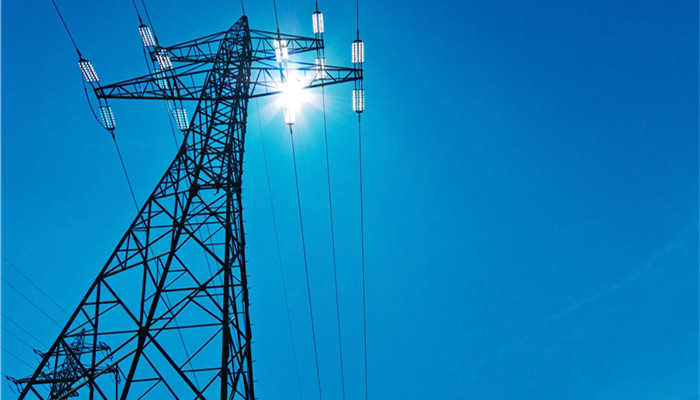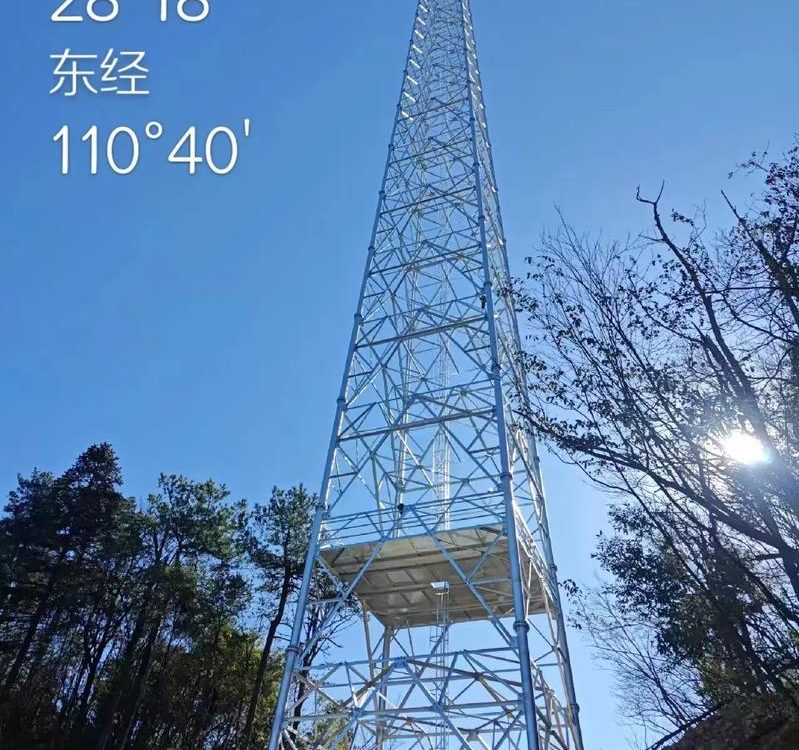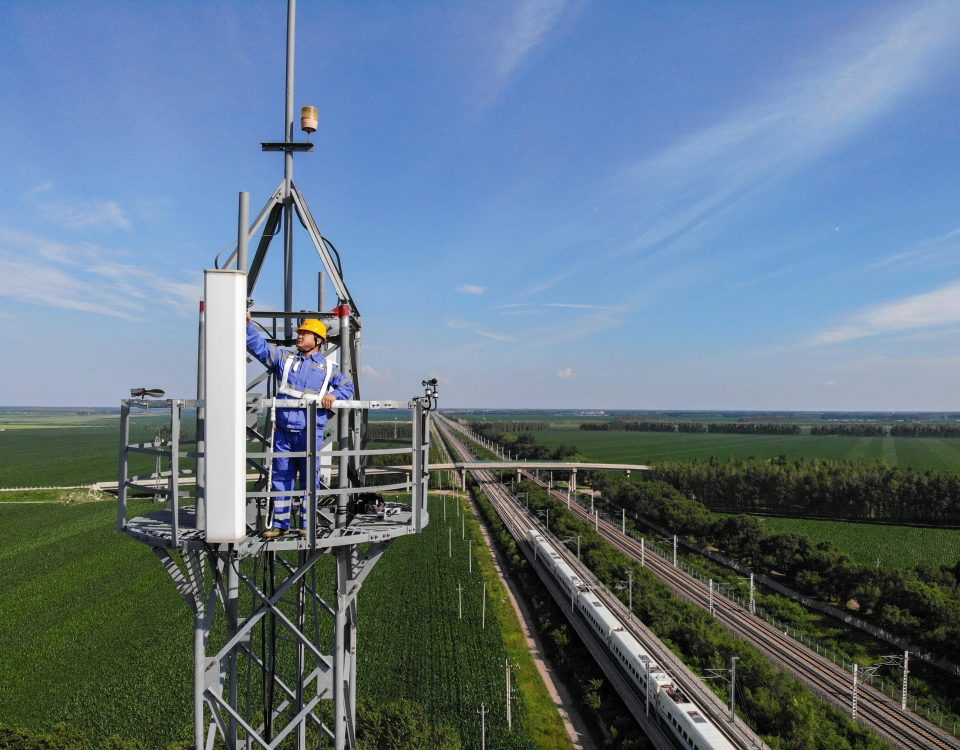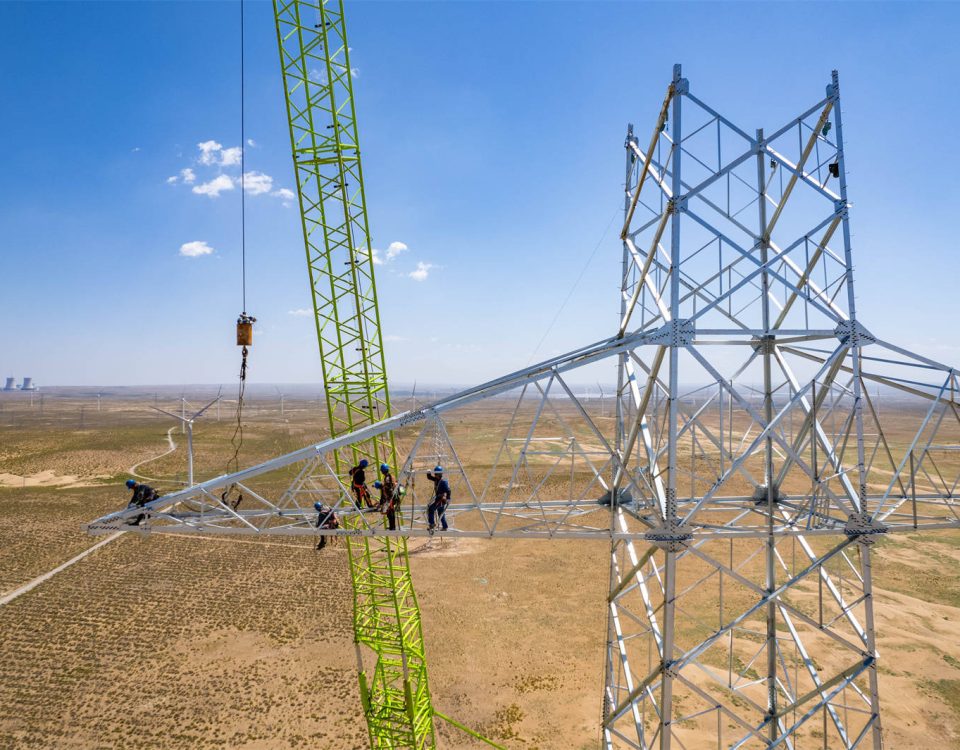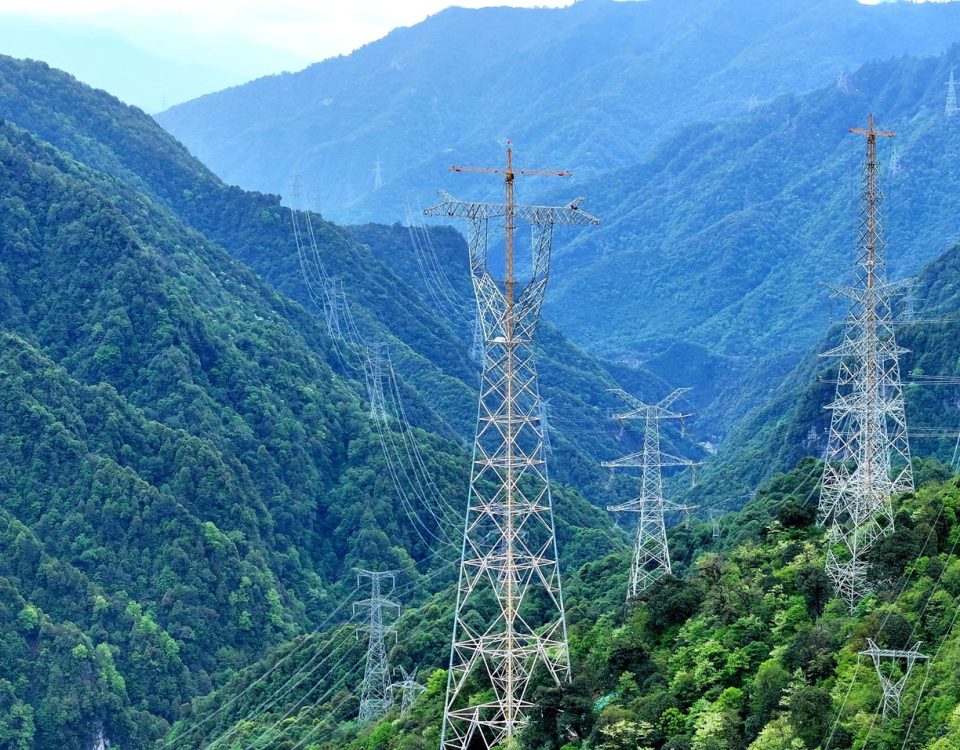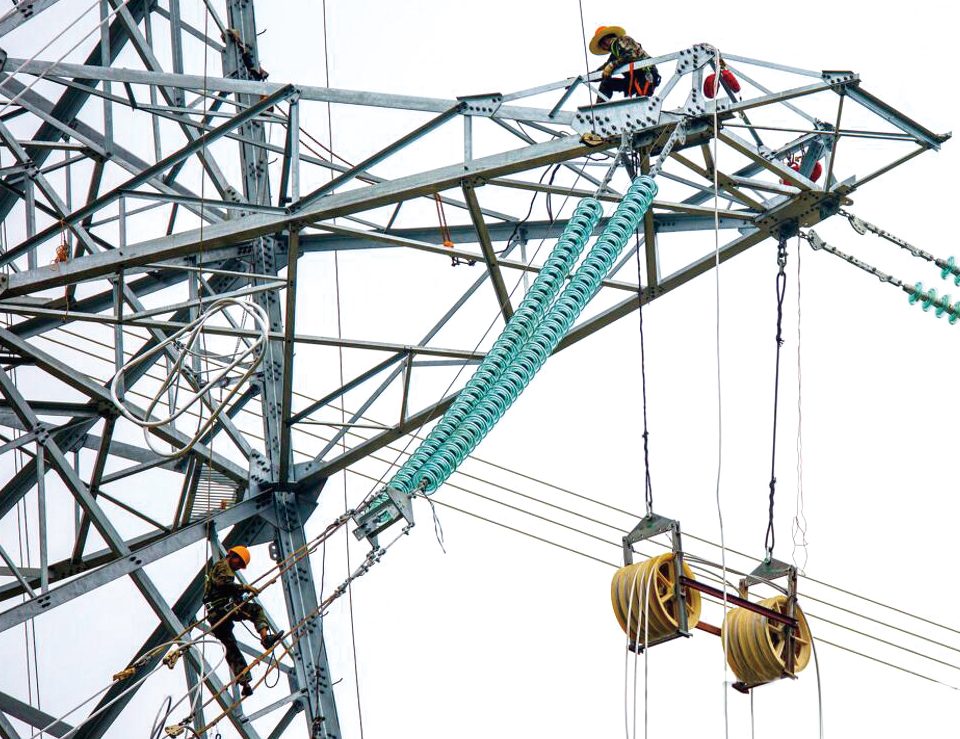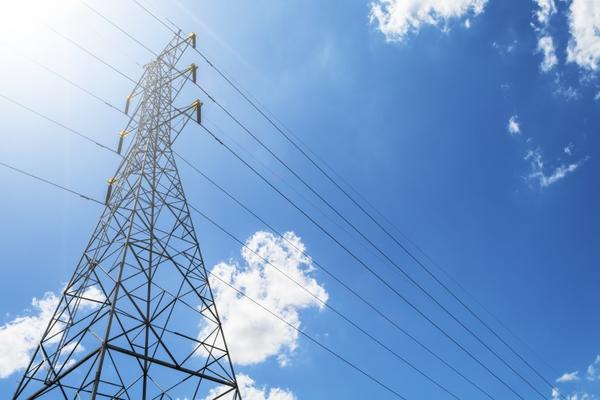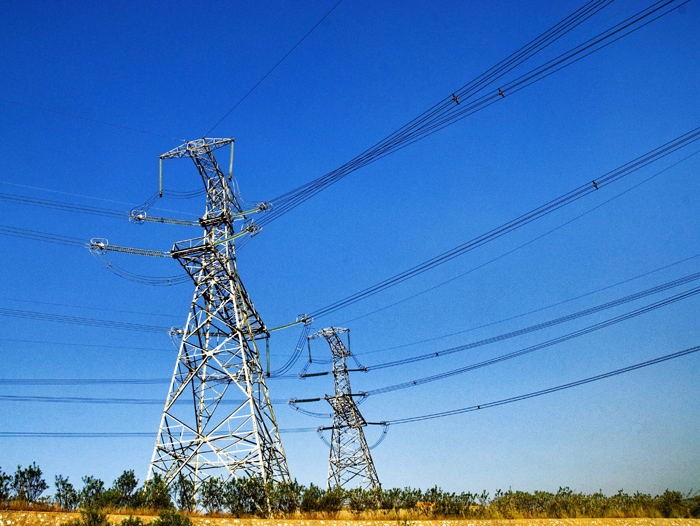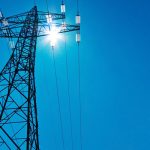
Technical Specifications for Angular Lattice Steel Transmission Towers
October 26, 20256G Wireless Communication Steel Tower
The conceptualization and detailed engineering of a telecommunications tower specifically designated for the 6G Wireless Communication era—an era defined by terahertz ($\text{THz}$) frequencies, instantaneous data transfer, ubiquitous intelligence, and massive connectivity densities—represents a paradigm shift far beyond the incremental upgrades seen in the transition from 4G to 5G, demanding a fundamental rethinking of the very structure that houses and directs this hyper-advanced technology. The tower is no longer a passive scaffold for heavy antennas operating in the sub-$6 \text{ GHz}$ range; it must evolve into an active, intelligent, highly efficient platform capable of supporting vast arrays of small, light, yet complex Massive MIMO and Reconfigurable Intelligent Surfaces (RIS), operating in the $\text{THz}$ and $\text{millimeter-wave}$ ($\text{mmWave}$) bands, which necessitates radical changes in the tower’s design philosophy, material science, and manufacturing precision, moving towards structures that are lighter, smarter, and significantly more resilient against wind load, vibration, and environmental degradation over extended lifecycles, all while seamlessly integrating the necessary power, cooling, and data backhaul systems required by the energy-intensive 6G network. This exploration must flow naturally, beginning with the unique performance demands of 6G that dictate the tower design, transitioning into the selection of advanced, lightweight, and high-strength materials—often beyond conventional galvanized steel—that can meet these new structural and electromagnetic requirements, and finally detailing the stringent manufacturing specifications, testing protocols, and the holistic concept of the tower as an intelligent, integrated piece of network infrastructure, ensuring a comprehensive, continuous narrative that captures the full depth and complexity of this cutting-edge product.
📡 The 6G Imperative: Structural Demands Driven by Terahertz Technology
The shift towards the sixth generation of wireless technology imposes structural and material constraints on the host tower that are fundamentally distinct and far more stringent than those of previous generations, necessitating an entirely new engineering calculus that is inextricably linked to the physics of signal propagation at extremely high frequencies, thereby requiring the tower to embody not just static strength, but dynamic intelligence and unparalleled stability. The defining characteristic of 6G is its reliance on the Terahertz ($\text{THz}$) frequency spectrum ($\sim 100 \text{ GHz}$ to $10 \text{ THz}$) and the high-end of $\text{mmWave}$ bands, frequencies that offer colossal bandwidth but suffer from severe path loss, minimal penetration, and high sensitivity to atmospheric conditions, demanding a significantly denser network architecture characterized by shorter transmission distances and a massive increase in the number of Access Points (APs) and Small Cells, a proliferation that fundamentally alters the role of the traditional “macro tower.” The 6G tower, therefore, must be designed to support an unprecedented Antenna Density, accommodating highly directional, multi-element Massive MIMO arrays and RIS panels rather than just a few legacy dishes, which, while individually lighter than past antennas, collectively increase the tower’s sheer complexity and demand for stable, predictable mounting points across the entire vertical structure, requiring a shift away from heavy, localized platforms towards lighter, distributed mounting solutions integrated seamlessly into the structural members themselves. Crucially, the extreme directionality and narrow beamforming required by $\text{THz}$ communication mean the tower structure must exhibit Exceptional Positional Stability and Vibration Damping, far surpassing the requirements of 4G; even sub-millimeter oscillations caused by wind loading, thermal expansion, or mechanical resonance can compromise the precision alignment of a $\text{THz}$ beam, leading to a catastrophic drop in network quality and reliability, thus requiring advanced structural materials with high stiffness-to-weight ratios and the incorporation of sophisticated Tuned Mass Dampers (TMDs) or viscoelastic materials directly into the tower’s structure, a design consideration that moves structural engineering firmly into the realm of dynamic micro-vibration analysis. Furthermore, the sheer computational power and active cooling required for these high-frequency, high-throughput systems—especially when RIS panels actively process and reflect signals—imply a massive increase in Power and Thermal Dissipation Requirements that must be seamlessly integrated into the tower structure, transforming the tower base and vertical shaft into a complex conduit for advanced power electronics, fiber-optic backhaul, and often liquid or phase-change cooling systems, a system-level integration that necessitates structural members designed not just for load-bearing but for efficient routing, shielding, and heat management, thereby establishing the 6G tower as a single, complex, intelligent, and electromagnetically transparent piece of critical network infrastructure, demanding a comprehensive, multi-disciplinary approach to its design and material selection.
🧱 Advanced Materials and Design Philosophy: Moving Beyond Conventional Steel
The stringent structural, stability, and electromagnetic transparency requirements imposed by 6G technology—particularly the need to support vast, distributed antenna loads with minimal structural mass and maximal rigidity—fundamentally challenge the limitations of conventional hot-dip galvanized steel, necessitating a significant shift towards Advanced Hybrid and Composite Materials in the design and manufacture of the 6G communication tower, a move driven by a meticulous calculation of strength-to-weight, stiffness, corrosion resistance, and electromagnetic interference (EMI) characteristics. While high-strength structural steels (like ASTM A572 Grade 65 or European S355/S460 grades) will remain essential for the critical base and core load-bearing components due to their proven strength and low-cost reliability, the upper sections of the tower, and increasingly the entire structure, will incorporate materials like Fiber-Reinforced Polymers (FRPs), such as Carbon Fiber Reinforced Polymer (CFRP) or Glass Fiber Reinforced Polymer (GFRP), particularly for mounting platforms, radomes, and even the main vertical bracing members, a decision driven by FRP’s exceptional Stiffness-to-Weight Ratio, which allows for much lighter structures that are inherently less susceptible to wind-induced resonance and provide superior inherent vibration damping compared to metallic structures of equivalent strength, thus addressing the critical stability requirements for $\text{THz}$ beamforming. Moreover, the inherent Electromagnetic Transparency of GFRP is a crucial advantage, eliminating the signal attenuation and reflection issues that metallic components can introduce in the $\text{mmWave}$ and $\text{THz}$ bands, ensuring that the structural framework itself does not interfere with the delicate, high-frequency beam steering capabilities of the integrated antennas, a problem that becomes exponentially more severe as frequencies increase. For structural components where steel remains necessary—such as the vertical legs or foundational anchors—the shift is toward High-Performance Weathering Steels (e.g., ASTM A588) or steel protected by advanced, multi-layer Polymer-Ceramic Hybrid Coatings rather than traditional hot-dip galvanization, with these modern protective systems offering vastly superior corrosion resistance over projected lifecycles of 50 years or more, coupled with reduced environmental impact from zinc usage, and allowing for lighter application weights. The design philosophy itself must move from a conservative, highly redundant lattice structure—optimized for heavy legacy microwave dishes—to a Sleek, Monopole, or Trusspole Design with advanced geometry, often utilizing computational fluid dynamics (CFD) to optimize the structure’s aerodynamic profile, minimizing the wind load and vortex-shedding effects that induce damaging vibrations, thereby ensuring that the material selection and the structural form work in perfect concert to create a platform that is not only structurally sound but is dynamically stable, electromagnetically invisible, and inherently optimized for the unique, high-frequency demands of the pervasive 6G network.
🔩 Structural Specifications and Engineering Standards: The Certification of Resilience
The successful design and deployment of a 6G-ready tower necessitate an uncompromising adherence to a stringent framework of international and national engineering standards that govern everything from material composition and welding quality to load calculation and wind speed resilience, transforming the final product into a certified guarantee of safety and long-term operational performance, a certification that carries immense weight given the criticality of the communications infrastructure. The foundational structural design must comply with globally recognized standards such as the TIA-222 (Structural Standard for Antenna Supporting Structures and Antennas) in North America, or its European equivalents, which dictate the methodology for calculating structural loads, incorporating not only dead and live loads but, crucially for 6G, the complex, highly localized Wind Load Calculations that must account for the specific drag coefficients of distributed RIS panels and Massive MIMO arrays across various elevations, often requiring higher $\text{Importance Factors}$ than previous-generation towers due to the essential nature of the hyper-connected 6G network. The primary metallic materials used in the tower’s fabrication must meet specific ASTM standards, ensuring verifiable chemical composition, mechanical properties, and weldability: for high-strength steel plates and bars, this typically involves standards like ASTM A572/A572M (High-Strength Low-Alloy Columbium-Vanadium Structural Steel), often specified at Grade 65 for enhanced strength, or ASTM A36/A36M for more common componentry, with all manufacturing processes—cutting, drilling, welding—conforming to precise codes like AWS D1.1 (Structural Welding Code—Steel), guaranteeing the integrity of the critical joints that bear the full structural load. The use of advanced materials, particularly FRP components, requires compliance with specialized standards like ASTM D7290 (Standard Practice for Evaluating Material Property Transfer in FRP Composites) to ensure the mechanical properties claimed are accurately transferable from test coupons to the finished structural components, a complexity that demands higher levels of quality control and non-destructive testing (NDT) during the manufacturing process. Furthermore, given the dense integration of power and optical fiber into the 6G tower, compliance with relevant National Electrical Code (NEC) and Telecommunications Industry Association (TIA) grounding and shielding standards is mandatory to ensure protection against lightning strikes and to minimize electromagnetic interference (EMI) that could corrupt the sensitive $\text{THz}$ front-end electronics, transforming the tower’s foundation and vertical structure into a complex, integrated grounding system. This rigorous layered application of standards—from the fundamental material specification to the final structural analysis and electrical integration—ensures that the designed product is not merely a strong pole, but a certified, resilient, and safe platform that is engineered to reliably endure the maximum anticipated environmental stresses over its operational life, thereby guaranteeing the structural bedrock upon which the entire high-stakes 6G communication network must securely operate.
🧪 Chemical Composition, Metallurgy, and Coatings: The Longevity Equation
The longevity and performance of a 6G wireless communication tower, operating in diverse and often corrosive environments globally, are intrinsically linked to the chemical composition and metallurgical properties of the chosen materials, particularly the steels, and the protective coating systems applied, representing an economic equation where upfront quality directly translates into vastly reduced lifecycle maintenance costs and guaranteed service life, a critical factor for network operators seeking reliable, long-term infrastructure assets. For the primary steel components, the selection often leans towards materials with enhanced characteristics, such as the aforementioned ASTM A572 Grade 65, which derives its high yield strength (minimum $450 \text{ MPa}$ or $65 \text{ ksi}$) and superior weldability from precise additions of alloying elements like Niobium (Columbium) and Vanadium, which act as microalloying agents to refine the grain size and increase strength through precipitation hardening, while maintaining low carbon content ($<0.23\%$) to ensure ductility and ease of fabrication, a chemical balance that makes it the material of choice for highly stressed leg members. Similarly, when Weathering Steels (e.g., ASTM A588) are specified—often preferred for their low-maintenance, aesthetically pleasing patina—the chemistry is precisely controlled to include small percentages of Copper ($\text{Cu}$), Chromium ($\text{Cr}$), and Nickel ($\text{Ni}$), elements that, when exposed to the atmosphere, form a dense, protective oxide layer that halts further corrosion, effectively making the steel self-protecting and ideal for remote or high-corrosion environments. However, the most critical chemical consideration often lies in the Protective Coating Systems applied to extend the steel’s life, moving beyond standard galvanization (which uses zinc) toward sophisticated Polymer-Ceramic Coatings or Duplex Coatings (paint over galvanizing) that utilize complex polymer chemistries and often include ceramic or metallic pigments like aluminum or zinc, forming a multi-barrier defense against rust; the chemical composition of these coatings must comply with strict environmental standards (e.g., low Volatile Organic Compounds, or $\text{VOC}$) and be rigorously tested for adhesion, flexibility, and resistance to UV degradation and salt spray (per standards like ASTM B117), guaranteeing that the initial protective barrier remains intact for decades, thereby isolating the structural steel from the atmospheric oxygen and moisture that drive corrosion. The meticulous control over the metallurgy and the precise chemical formulation of the protective layers is not simply a matter of compliance; it is the fundamental mechanism by which the 6G tower is guaranteed to maintain its structural integrity and precision over a 50-year design life, a longevity that is economically essential for large-scale, distributed network assets.
⚙️ Fabrication, Assembly, and Quality Control: The Precision Mandate
The manufacturing of a 6G-ready communication tower is a high-precision, multi-stage process that integrates advanced fabrication techniques for both metallic and composite components with an exhaustive system of quality control and verification, moving the operation well beyond traditional heavy fabrication into the realm of precision structural engineering, necessitated by the strict positional stability requirements of $\text{THz}$ communications and the need for seamless integration of complex electronic hardware. The fabrication begins with the meticulous preparation of the structural steel components, where modern facilities utilize Computer Numerical Control (CNC) plasma cutting and drilling machines to achieve sub-millimeter tolerances on bolt holes and connection plates, a level of precision that is mandatory to ensure perfect alignment of the tower sections during field erection and minimize structural eccentricities that could exacerbate vibration, a precision particularly vital for the tower base and the primary leg members. Welding, a critical process that determines the strength and fatigue life of the joints, is executed under strict adherence to codes like AWS D1.1, requiring certified welders, pre-qualified welding procedures (WPS), and rigorous Non-Destructive Testing (NDT)—including Magnetic Particle Testing (MPT) or Ultrasonic Testing (UT) on $100\%$ of critical load-bearing welds—to verify the absence of internal defects, cracks, or porosity that could compromise the joint’s integrity under cyclic wind loading. The integration of composite components, like FRP mounting arms or structural bracing, introduces additional complexity, demanding specialized manufacturing techniques such as Resin Transfer Molding (RTM) or vacuum infusion to ensure optimal fiber-to-resin ratio and minimize void content, with quality checks focused on the mechanical interface between the non-metallic and metallic elements—a zone highly susceptible to galvanic corrosion or structural failure if not meticulously designed and manufactured, often using specialized insulating spacers or bushings. Before shipment, a critical final step is the Full Trial Assembly of one or more tower sections at the fabrication facility, where the fit-up of mating parts, the alignment of bolt holes, and the overall dimensional accuracy are physically verified, often using high-precision Laser Scanning or Photogrammetry techniques to create a detailed three-dimensional model for comparison against the original $\text{CAD}$ design, a final, essential verification step that minimizes costly and time-consuming modifications during field erection at the remote site. This comprehensive, precision-driven manufacturing and quality control regime—encompassing materials, welding, composite integration, and final assembly verification—ensures that the final delivered tower not only meets the mandated safety and load requirements but also possesses the precise geometric and structural stability necessary to function flawlessly as the high-performance platform for the sensitive, $\text{THz}$-dependent components of the 6G wireless network.
💼 Technical Specifications and Tables for 6G Wireless Tower Design
The table below consolidates the specialized materials, standards, and performance specifications that define the next-generation 6G wireless communication tower, emphasizing the shift toward high-strength, lightweight, and electromagnetically transparent solutions required to support $\text{THz}$ and Massive MIMO technologies.
Table 1: Materials and Structural Standards
| Parameter | Primary Steel Components (Legs/Base) | Secondary/Mounting Components (Platforms/Bracing) | Protection System | Governing Standards |
| Material | ASTM A572 Gr. 65 (High-Strength Low-Alloy Steel) | ASTM A572 Gr. 50 / FRP (CFRP or GFRP Composites) | Advanced Polymer-Ceramic Coatings / Duplex Systems | TIA-222 (Structural Design), AWS D1.1 (Welding) |
| Chemical Composition | Max $\text{C} 0.23$, $\text{Mn} 1.35$, $\text{Si} 0.40$, Min $\text{Nb/V}$ controlled | Varies for steel; Custom for FRP Resin/Fiber Type | Custom Polymer/Epoxy, Zinc/Aluminum Pigments | ASTM A572/A572M, ISO 14713 (Corrosion Protection) |
| Heat Treatment | Not typically heat-treated post-rolling; Stress relief for large welds | Varies (e.g., Curing for FRP, Stress relief for critical steel joints) | Baking/Curing for Polymer Coatings | Manufacturer’s WPS, ASTM D7290 (FRP Curing) |
| Dimensions | $0.5$m to $3.0$m Base Width (Monopole or Trusspole), Heights $30$m to $120$m | Custom engineered for distributed $\text{MIMO/RIS}$ arrays; Tight dimensional tolerance | Coating Thickness (DFT) $\sim 100-300 \mu\text{m}$ | Specified per Project (e.g., ASME B36.10M for Pipe Legs) |
Table 2: Structural and Mechanical Requirements (Minimum)
| Requirement | Steel Grade (A572 Gr. 65) | FRP Composites (Typical CFRP) | Structural Performance Goal |
| Min. Yield Strength | $450$ MPa ($65$ ksi) | $150$ MPa (Flexural) | Maximize Strength-to-Weight Ratio |
| Min. Tensile Strength | $620$ MPa ($90$ ksi) | $500$ MPa (Ultimate) | Ensure Safety Factor against Extreme Wind Loads |
| Elongation at Break | $18\%$ (Min) | $1.5\% – 3.0\%$ | Maintain Ductility and Prevent Brittle Failure |
| Vibration Damping | High $\text{Stiffness}$ (E-Modulus $\sim 200 \text{ GPa}$) | Very High Damping Capability (Low Resonance) | Limit $\text{THz}$ Antenna Tip Deflection to Sub-mm |
| Corrosion Protection | $50+$ Year Design Life | Inherently Corrosion Resistant | Guarantee Asset Longevity with Minimal Maintenance |
Table 3: 6G Specific Features and Application
| Feature | Design Requirement for 6G | Key Advantage | Application Environment |
| Positional Stability | Deflection limited to $\ll 1$ degree; Sub-millimeter vibration control. | Guarantees $\text{THz}$ Beamforming Precision. | Urban Macro Sites, Critical Data Hubs. |
| Antenna Density | Distributed mounting zones for hundreds of $\text{RIS/MIMO}$ panels. | Supports Massive Capacity and Ubiquitous Coverage. | Dense Urban Areas (Street Furniture, Rooftops). |
| Material Transparency | Use of $\text{GFRP/CFRP}$ for non-load-bearing antenna support zones. | Minimizes $\text{THz}$ Signal Attenuation and Reflection (EMI). | All $\text{mmWave/THz}$ Deployment Scenarios. |
| Integrated Conduit | Internal routing systems for high-capacity fiber, power, and active cooling lines. | Reduces External Clutter; Enhances Thermal Management. | Smart City Infrastructure, Industrial IoT Zones. |
| Aerodynamic Profile | Monopole/Trusspole designs with minimized drag. | Reduces Wind Load (Torsional Forces) and Structural Resonance. | High-Wind Coastal and Inland Areas. |
💡 Conclusion: The Integrated Platform for a Hyper-Connected Future
The 6G wireless communication tower, in its final form, is not merely a tall, passive structure; it is an intelligent, high-precision, and integrated platform that fundamentally addresses the unique physical and electromagnetic challenges posed by the $\text{Terahertz}$ era, standing as a critical piece of advanced engineering infrastructure. Our design philosophy, rooted in the principles of maximizing strength-to-weight ratios through materials like ASTM A572 Grade 65 and advanced FRP composites, rigorously adhering to TIA-222 and AWS D1.1 standards, and applying sophisticated, long-life polymer-ceramic coatings, ensures a structural solution that is resilient, dynamically stable, and capable of maintaining the sub-millimeter precision required for highly directional beamforming. The focus on meticulous fabrication, $100\%$ weld inspection, and full trial assembly guarantees that the tower is not only safe and compliant but also perfectly aligned and ready to host the dense, complex arrays of Massive $\text{MIMO}$ and $\text{RIS}$ hardware that will define the hyper-connected, near-instantaneous world of 6G, thereby providing the robust, reliable, and electromagnetically transparent foundation for the next generation of global wireless connectivity.
Would you like me to elaborate on the specific integration challenges of power and cooling systems within the 6G tower structure, or perhaps detail the advanced Non-Destructive Testing (NDT) protocols used to ensure the integrity of the critical welds and composite connections?


